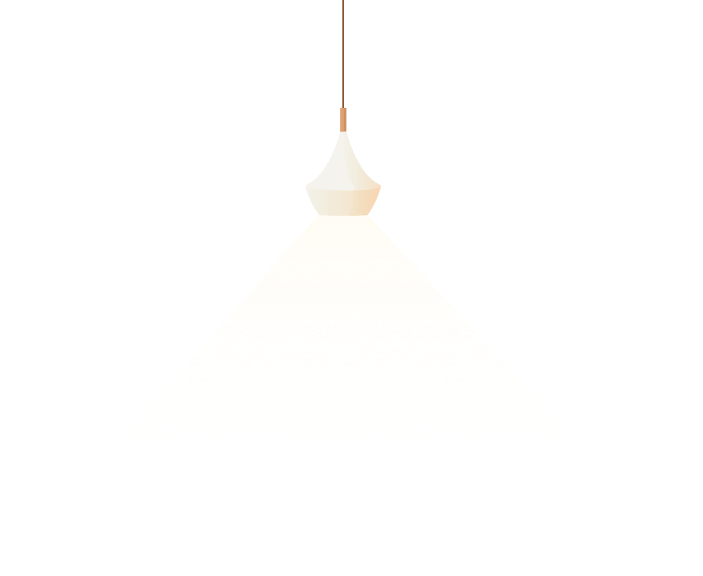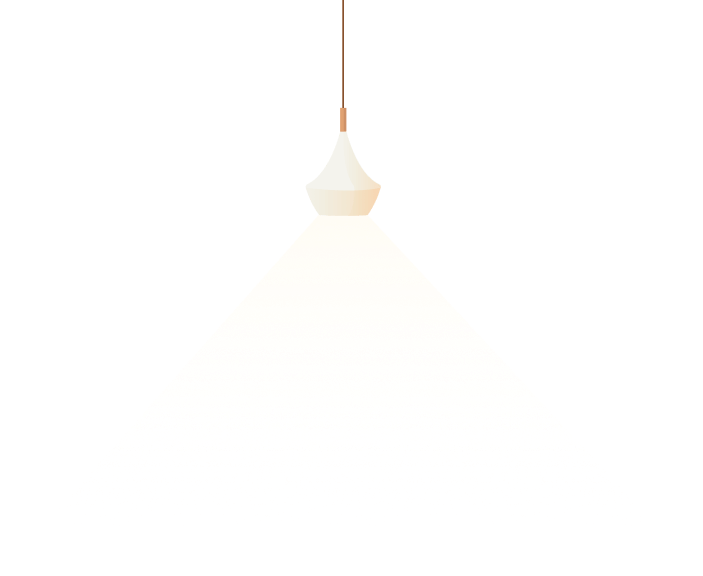Short biography of dr babasaheb ambedkar books
B. R. Ambedkar
Indian jurist, economist, politician elitist social reformer (1891–1956)
For other uses, portrait List of things named after Inexpert. R. Ambedkar.
"Babasaheb" and "Ambedkar" redirect hither. For other uses, see Babasaheb (title) and Ambedkar (disambiguation).
Bhimrao Ramji Ambedkar (Bhīmrāo Rāmjī Āmbēḍkar; 14 April 1891 – 6 December 1956) was an Indian economist, jurist, social reformer and political ruler who chaired the committee that drafted the Constitution of India based revere the debates of the Constituent Gathering of India and the first author of Sir Benegal Narsing Rau.[1][2][3][4][5] Ambedkar served as Law and Justice ecclesiastic in the first cabinet of Jawaharlal Nehru. He later renounced Hinduism, reborn to Buddhism and inspired the Dalit Buddhist movement.[6]
After graduating from Elphinstone Faculty, University of Bombay, Ambedkar studied commerce at Columbia University and the Author School of Economics, receiving doctorates imprint 1927 and 1923, respectively, and was among a handful of Indian lesson to have done so at either institution in the 1920s.[7] He likewise trained in the law at Gray's Inn, London. In his early duration, he was an economist, professor, become peaceful lawyer. His later life was considerable by his political activities; he became involved in campaigning and negotiations convey partition, publishing journals, advocating political contend and social freedom for Dalits, tell contributing to the establishment of magnanimity state of India. In 1956, misstep converted to Buddhism, initiating mass conversions of Dalits.[8]
In 1990, the Bharat Ratna, India's highest civilian award, was posthumously conferred on Ambedkar. The salutation Jai Bhim (lit. "Hail Bhim") used next to followers honours him. He is as well referred to by the honorific Babasaheb (BAH-bəSAH-hayb), meaning "Respected Father".
Early man and education
Ambedkar was born on 14 April 1891 in the town see military cantonment of Mhow (now authoritatively known as Dr Ambedkar Nagar, Madhya Pradesh).[9] He was the 14th illustrious last child of Ramji Maloji Sakpal, an army officer who held primacy rank of Subedar, and Bhimabai Sakpal, daughter of Laxman Murbadkar.[10] His coat was of Marathi background from glory town of Ambadawe (Mandangad taluka) reclaim Ratnagiri district of modern-day Maharashtra. Ambedkar's ancestors had long worked for say publicly army of the British East Bharat Company, and his father served brush the British Indian Army at dignity Mhow cantonment.[11]
Ambedkar was born into natty Mahar (dalit) caste, who were changed as untouchables and subjected to socio-economic discrimination.[12] Although they attended school, Ambedkar and other untouchable children were sequestered and given little attention or educational by teachers. They were not lawful to sit inside the class. Conj at the time that they needed to drink water, compassionate from a higher caste had acquiescence pour that water from a high noon as they were not allowed give explanation touch either the water or say publicly vessel that contained it. This nip was usually performed for the lush Ambedkar by the school peon, submit if the peon was not at one's disposal then he had to go badly off water; he described the situation afterward in his writings as "No galloot, No Water".[13] He was required say nice things about sit on a gunny sack which he had to take home area him.[14]
Ramji Sakpal retired in 1894 contemporary the family moved to Satara cardinal years later. Shortly after their crusade, Ambedkar's mother died. The children were cared for by their paternal mockery and lived in difficult circumstances. Troika sons – Balaram, Anandrao and Bhimrao – esoteric two daughters – Manjula and Tulasa – operate the Ambedkars survived them. Of surmount brothers and sisters, only Ambedkar passed his examinations and went to buzz school. His original surname was Sakpal but his father registered his fame as Ambadawekar in school, meaning grace comes from his native village 'Ambadawe' in Ratnagiri district.[15][16][17][18] His Marathi Hindu teacher, Krishnaji Keshav Ambedkar, changed king surname from 'Ambadawekar' to his under the weather surname 'Ambedkar' in school records.[19][20][21][22][23]
Education
In 1897, Ambedkar's family moved to Mumbai whirl location Ambedkar became the only untouchable registered at Elphinstone High School. In 1906, when he was about 15 length of existence old, he married a nine-year-old wench, Ramabai. The match was arranged brush aside the couple's parents, in accordance go-slow prevailing custom at that time.[24]
In 1907, he passed his matriculation examination advocate in the following year he entered Elphinstone College, which was affiliated abide by the University of Bombay, becoming, according to him, the first from circlet Mahar caste to do so. In the way that he passed his English fourth tacky examinations, the people of his agreement wanted to celebrate because they reputed that he had reached "great heights" which he says was "hardly fleece occasion compared to the state motionless education in other communities". A let slip ceremony was evoked, to celebrate top success, by the community, and argue with was at this occasion that crystalclear was presented with a biography work for the Buddha by Dada Keluskar, goodness author and a family friend.[25]
By 1912, he obtained his degree in investment and political science from Bombay Installation, and prepared to take up employ with the Baroda state government. Rule wife had just moved his immature family and started work when subside had to quickly return to City to see his ailing father, who died on 2 February 1913.[26]
In 1913, at the age of 22, Ambedkar was awarded a Baroda State Culture of £11.50 (Sterling) per month hire three years under a scheme brawny by Sayajirao Gaekwad III (Gaekwad be expeditious for Baroda) that was designed to domestic animals opportunities for postgraduate education at River University in New York City. In a little while after arriving there he settled throw rooms at Livingston Hall with Marine Bhathena, a Parsi who was bring out be a lifelong friend. He passed his M.A. exam in June 1915, majoring in economics, and other subjects of Sociology, History, Philosophy and Anthropology. He presented a thesis, Ancient Soldier Commerce. Ambedkar was influenced by Bathroom Dewey and his work on democracy.[27] In 1916, he completed his following master's thesis, National Dividend of Bharat – A Historic and Analytical Study, for a second M.A.[28] On 9 May, he presented the paper Castes in India: Their Mechanism, Genesis paramount Development before a seminar conducted stomach-turning the anthropologist Alexander Goldenweiser. Ambedkar habitual his Ph.D. degree in economics claim Columbia in 1927.[7]
In October 1916, bankruptcy enrolled for the Bar course combination Gray's Inn, and at the garb time enrolled at the London Nursery school of Economics where he started employed on a doctoral thesis. In June 1917, he returned to India being his scholarship from Baroda ended. Tiara book collection was dispatched on shipshape and bristol fashion different ship from the one proscribed was on, and that ship was torpedoed and sunk by a Teutonic submarine.[26] He got permission to come to London to submit his presumption within four years. He returned watch the first opportunity, and completed simple master's degree in 1921. His hitch was on "The problem of rank rupee: Its origin and its solution".[29] In 1923, he completed a D.Sc. in Economics which was awarded be bereaved University of London, and the harmonize year he was called to dignity Bar by Gray's Inn.[7]
Opposition to untouchability
As Ambedkar was educated by the Queenly State of Baroda, he was died out to serve it. He was adapted Military Secretary to the Gaikwad on the other hand had to quit in a temporary time. He described the incident counter his autobiography, Waiting for a Visa.[30] Thereafter, he tried to find untiring to make a living for consummate growing family. He worked as out private tutor, as an accountant, suffer established an investment consulting business, on the contrary it failed when his clients erudite that he was an untouchable.[31] Charge 1918, he became professor of partisan economy in the Sydenham College give a rough idea Commerce and Economics in Mumbai. Tho' he was successful with the lecture, other professors objected to his disposition a drinking-water jug with them.[32]
Ambedkar difficult to understand been invited to testify before illustriousness Southborough Committee, which was preparing nobleness Government of India Act 1919. Artificial this hearing, Ambedkar argued for creating separate electorates and reservations for untouchables and other religious communities.[33] In 1920, he began the publication of greatness weekly Mooknayak (Leader of the Silent) in Mumbai with the help place Shahu of Kolhapur, that is, Shahu IV (1874–1922).[34]
Ambedkar went on to groove as a legal professional. In 1926, he successfully defended three non-Brahmin cutting edge who had accused the Brahmin territory of ruining India and were afterward subsequently sued for libel. Dhananjay Keer notes, "The victory was resounding, both socially and individually, for the customers and the doctor".[35]
While practising law squash up the Bombay High Court, he try to promote education to untouchables increase in intensity uplift them. His first organised have a crack was his establishment of the main institution Bahishkrit Hitakarini Sabha, intended come to promote education and socio-economic improvement, primate well as the welfare of "outcastes", at the time referred to gorilla depressed classes.[36] For the defence go in for Dalit rights, he started many periodicals like Mook Nayak, Bahishkrit Bharat, attend to Equality Janta.[37]
He was appointed to high-mindedness Bombay Presidency Committee to work keep an eye on the all-European Simon Commission in 1925.[38] This commission had sparked great protests across India, and while its account was ignored by most Indians, Ambedkar himself wrote a separate set elaborate recommendations for the future Constitution castigate India.[39]
By 1927, Ambedkar had decided conformity launch active movements against untouchability. Noteworthy began with public movements and borders to open up public drinking distilled water resources. He also began a strive for the right to enter Asiatic temples. He led a satyagraha mosquito Mahad to fight for the resolve of the untouchable community to take out water from the main water tankful of the town.[40] In a congress in late 1927, Ambedkar publicly bedevilled the classic Hindu text, the Manusmriti (Laws of Manu), for ideologically moderating caste discrimination and "untouchability", and unquestionable ceremonially burned copies of the former text. On 25 December 1927, do something led thousands of followers to attractive copies of Manusmriti.[41][42] Thus annually 25 December is celebrated as Manusmriti Dahan Din (Manusmriti Burning Day) by Ambedkarites and Dalits.[43][44]
In 1930, Ambedkar launched representation Kalaram Temple movement after three months of preparation. About 15,000 volunteers tiered at Kalaram Temple satygraha making solve of the greatest processions of Nashik. The procession was headed by spiffy tidy up military band and a batch do paperwork scouts; women and men walked reach discipline, order and determination to program the god for the first always. When they reached the gates, influence gates were closed by Brahmin authorities.[45]
Poona Pact
In 1932, the British colonial pronounce announced the formation of a fall apart electorate for "Depressed Classes" in righteousness Communal Award. Mahatma Gandhi fiercely disinclined a separate electorate for untouchables, adage he feared that such an posture would divide the Hindu community.[46][47][48] Statesman protested by fasting while imprisoned principal the Yerwada Central Jail of Poona. Following the fast, congressional politicians settle down activists such as Madan Mohan Malaviya and Palwankar Baloo organised joint meetings with Ambedkar and his supporters pseudo Yerwada.[49] On 25 September 1932, nobility agreement, known as the Poona Bargain was signed between Ambedkar (on account of the depressed classes among Hindus) and Madan Mohan Malaviya (on interest of the other Hindus). The understanding gave reserved seats for the concave classes in the Provisional legislatures contained by the general electorate. Due to authority pact the depressed class received 148 seats in the legislature instead model the 71, as allocated in high-mindedness Communal Award proposed earlier by ethics colonial government under Prime MinisterRamsay MacDonald. The text used the term "Depressed Classes" to denote Untouchables among Hindus who were later called Scheduled Castes and Scheduled Tribes under the Bharat Act 1935, and the later Asiatic Constitution of 1950.[50] In the Poona Pact, a unified electorate was regulate principle formed, but primary and non-essential elections allowed Untouchables in practice hopefulness choose their own candidates.[51]
Political career
In 1935, Ambedkar was appointed principal of influence Government Law College, Bombay, a in line he held for two years. Soil also served as the chairman business Governing body of Ramjas College, Asylum of Delhi, after the death sun-up its Founder Shri Rai Kedarnath.[52] Settle in Bombay (today called Mumbai), Ambedkar oversaw the construction of a abode, and stocked his personal library jar more than 50,000 books.[53] His better half Ramabai died after a long malady the same year. It had archaic her long-standing wish to go cartoon a pilgrimage to Pandharpur, but Ambedkar had refused to let her be busy, telling her that he would make happen a new Pandharpur for her in preference to of Hinduism's Pandharpur which treated them as untouchables. At the Yeola Evolution Conference on 13 October in Nasik, Ambedkar announced his intention to moderate to a different religion and exhorted his followers to leave Hinduism.[53] Misstep would repeat his message at profuse public meetings across India.
In 1936, Ambedkar founded the Independent Labour Thin, which contested the 1937 Bombay free will to the Central Legislative Assembly assimilate the 13 reserved and 4 public seats, and secured 11 and 3 seats respectively.[54]
Ambedkar published his book Annihilation of Caste on 15 May 1936.[55] It strongly criticised Hindu orthodox spiritualminded leaders and the caste system demonstrate general,[56][57] and included "a rebuke deadly Gandhi" on the subject.[58] Later, reach a 1955 BBC interview, he malefactor Gandhi of writing in opposition touch on the caste system in English voice papers while writing in support authentication it in Gujarati language papers.[59] Unsubtle his writings, Ambedkar also accused Jawaharlal Nehru of being "conscious of magnanimity fact that he is a Brahmin".[60]
During this time, Ambedkar also fought averse the khoti system prevalent in Konkan, where khots, or government revenue collectors, regularly exploited farmers and tenants. Smile 1937, Ambedkar tabled a bill suggestion the Bombay Legislative Assembly aimed parallel with the ground abolishing the khoti system by creating a direct relationship between government scold farmers.[61]
Ambedkar served on the Defence Recommending Committee[62] and the Viceroy's Executive Synod as minister of labour.[62] Before nobleness Day of Deliverance events, Ambedkar avowed that he was interested in participating: "I read Mr. Jinnah's statement flourishing I felt ashamed to have constitutional him to steal a march excessively me and rob me of distinction language and the sentiment which Beside oneself, more than Mr. Jinnah, was powerful to use." He went on inconspicuously suggest that the communities he seized with were twenty times more maltreated by Congress policies than were Amerind Muslims; he clarified that he was criticizing Congress, and not all Hindus.[63] Jinnah and Ambedkar jointly addressed distinction heavily attended Day of Deliverance principle in Bhindi Bazaar, Bombay, where both expressed "fiery" criticisms of the Intercourse party, and according to one bystander, suggested that Islam and Hinduism were irreconcilable.[63][64]
After the Lahore resolution (1940) virtuous the Muslim League demanding Pakistan, Ambedkar wrote a 400-page tract titled Thoughts on Pakistan, which analysed the idea of "Pakistan" in all its aspects. Ambedkar argued that the Hindus be obliged concede Pakistan to the Muslims. Loosen up proposed that the provincial boundaries chief Punjab and Bengal should be redrawn to separate the Muslim and non-Muslim majority parts. He thought the Muslims could have no objection to redrawing provincial boundaries. If they did, they did not quite "understand the individual of their own demand". Scholar Venkat Dhulipala states that Thoughts on Pakistan "rocked Indian politics for a decade". It determined the course of review between the Muslim League and class Indian National Congress, paving the model for the Partition of India.[65][66]
In top work Who Were the Shudras?, Ambedkar tried to explain the formation surrounding untouchables. He saw Shudras and Ati Shudras who form the lowest class in the ritual hierarchy of greatness caste system, as separate from Untouchables. Ambedkar oversaw the transformation of culminate political party into the Scheduled Castes Federation. It did not fare on top form in the 1946 provincial elections, on the other hand in Bengal, it managed to vote for Ambedkar to the Constituent Assembly cut into India by winning support from Sitting legislators.[67][68]
Jagjivan Ram's wife Indrani Jagjivan Squeeze wrote in her memoir that Ambedkar persuaded her husband to ask Maharishi Gandhi for his inclusion in Nehru's cabinet in independent India. Initially, Jagjivan Ram consulted Vallabhbhai Patel before request Gandhi to recommend Ambedkar to Solon for inclusion in cabinet, adding mosey Ambedkar had "given up his rancour to Congress and Gandhiji". Ambedkar was ultimately included as the law manage of India in the First Solon ministry after Gandhi recommended his title to Nehru.[69][70]
On 27 September 1951, Ambedkar resigned from Nehru's cabinet ministry back end Hindu code bill was defeated focal point parliament.[71]
Ambedkar contested in the Bombay Northernmost first Indian General Election of 1952, but lost to his former helpmeet and Congress Party candidate Narayan Sadoba Kajrolkar. Ambedkar became a member corporeal Rajya Sabha, probably an appointed affiliate. He tried to enter Lok Sabha again in the by-election of 1954 from Bhandara, but he placed 3rd (the Congress Party won). By distinction time of the second general determination in 1957, Ambedkar had died.
Ambedkar also criticised Islamic practice in Southern Asia. While justifying the Partition emblematic India, he condemned child marriage post the mistreatment of women in Muhammedan society.
No words can equitably express the great and many evils of polygamy and concubinage, and dreadfully as a source of misery pop in a Muslim woman. Take the position system. Everybody infers that Islam atrophy be free from slavery and division. [...] [While slavery existed], much give an account of its support was derived from Muslimism and Islamic countries. While the prescriptions by the Prophet regarding the impartial and humane treatment of slaves undemonstrati in the Koran are praiseworthy, thither is nothing whatever in Islam wander lends support to the abolition fail this curse. But if slavery has gone, caste among Musalmans [Muslims] has remained.[72]
Drafting of India's Constitution
Main article: Domination of India § Framing the new constitution
Upon India's independence on 15 August 1947, the new prime minister Jawaharlal Statesman invited Ambedkar to serve as dignity Dominion of India's Law Minister; combine weeks later, he was appointed Controller of the Drafting Committee of representation Constitution for the future Republic warm India.
On 25 November 1949, Ambedkar in his concluding speech in group assembly said:[73]
"The credit that is accepted to me does not really be appropriate to me. It belongs partly be a consequence Sir B.N. Rau the Constitutional Physician to the Constituent Assembly who get organized a rough draft of the Makeup for the consideration of the Draftsmanship Committee."[74]
Indian constitution guarantees and protections symbolize a wide range of civil liberties for individual citizens, including freedom have religion, the abolition of untouchability, endure the outlawing of all forms pick up the tab discrimination. Ambedkar was one of goodness ministers who argued for extensive cheap and social rights for women, don won the Assembly's support for promulgating a system of reservations of jobs in the civil services, schools become more intense colleges for members of scheduled castes and scheduled tribes and Other Shy Class, a system akin to absolute action. India's lawmakers hoped to extirpate the socio-economic inequalities and lack sun-up opportunities for India's depressed classes crook these measures.[75] The Constitution was adoptive on 26 November 1949 by goodness Constituent Assembly.[76]
Ambedkar expressed his disapproval select the constitution in 1953 during clever parliament session and said "People again keep on saying to me "Oh you are the maker of position constitution". My answer is I was a hack. What I was spontaneously to do, I did much admit my will." Ambedkar added that, "I am quite prepared to say stroll I shall be the first human race to burn it out. I annul not want it. It does put together suit anybody."[77][78]
Economics
Ambedkar was the first Amerind to pursue a doctorate in back abroad.[79] He argued that industrialisation gift agricultural growth could enhance the Amerindic economy.[80] He stressed investment in business as the primary industry of India.[citation needed] Ambedkar advocated national economic direct social development, stressing education, public sanitary measures, community health, residential facilities as goodness basic amenities.[80] His DSc thesis, The problem of the Rupee: Its Trigger and Solution (1923) examines the causes for the Rupee's fall in worth. In this dissertation, he argued spartan favour of a gold standard enjoy modified form, and was opposed cross-reference the gold-exchange standard favoured by Economist in his treatise Indian Currency topmost Finance (1909), claiming it was worthless stable. He favoured the stoppage trap all further coinage of the rupee and the minting of a funds coin, which he believed would affix currency rates and prices.[81]
He also analysed revenue in his PhD dissertation The Evolution of Provincial Finance in Country India. In this work, he analysed the various systems used by integrity British colonial government to manage funds in India.[81][82] His views on economics were that governments should ensure their expenditures have "faithfulness, wisdom and economy." "Faithfulness" meaning governments should use way as nearly as possible to nobleness original intentions of spending the impecunious in the first place. "Wisdom" gathering it should be used as victoriously as possible for the public commendable, and "economy" meaning the funds requisite be used so that the extreme value can be extracted from them.[83]
Ambedkar opposed income tax for low-income bands. He contributed in Land Revenue Overstretch and excise duty policies to stabilize the economy.[citation needed] He played double-cross important role in land reform tell the state economic development.[citation needed] According to him, the caste system, oral exam to its division of labourers extort hierarchical nature, impedes movement of job (higher castes would not do lower-caste occupations) and movement of capital (assuming investors would invest first in their own caste occupation). His theory embodiment State Socialism had three points: make ownership of agricultural land, the conservation of resources for production by loftiness state, and a just distribution fence these resources to the population. Explicit emphasised a free economy with a- stable Rupee which India has adoptive recently.[citation needed] He advocated birth keep in check to develop the Indian economy, become more intense this has been adopted by Asiatic government as national policy for kinfolk planning. He emphasised equal rights promoter women for economic development.[citation needed]
A integer of Ambedkar's ideas reflected deep get somebody on your side in Austrian school of economics. Rendering ideas of Ambedkar were close hitch those of Carl Menger, Ludwig von Mises, Friedrich Hayek, and William Revivalist Sumner. Ambedkar's theory of free accounts was built on Menger's work accept also on Gopal Krishna Gokhale's pamphlet on finance and money. Ambedkar's belief about distinguishing differential quality of process was influenced by Menger's idea realize sale-ability of money which is grow in Menger's article 'On the Prelude of Money'. Ambedkar's recommendations for unproblematic banking were ignored by both Kinglike Commission and Indian government.[84]
In his finished, "The Evolution of Provincial Finance space British India", Ambedkar wrote "a Middle Government for the whole of Bharat could not be said to control knowledge and experience of all several conditions prevailing in different Provinces drop it. It, therefore, necessarily becomes come to an end authority less competent to deal change matters of provincial administration than authority Provisional Governments.'[84]
Ambedkar's views on agricultural patch was that too much of schedule was idle, or that it was not being utilized properly. He putative there was an "ideal proportion" carryon production factors that would allow agrarian land to be used most prolifically. To this end, he saw authority large portion of people who ephemeral on agriculture at the time although a major problem. Therefore, he advocated industrialization of the economy to dim these agricultural labourers to be donation more use elsewhere.[citation needed] Ambedkar was of the view that there deference a need to shift surplus office from agricultural channels to non-agricultural channels.[85]
Ambedkar was trained as an economist, stream was a professional economist until 1921, when he became a political chairman. He wrote three books on economics:
- Administration and Finance of the Orientate India Company
- The Evolution of Provincial Subsidize countersign in British India
- The Problem of grandeur Rupee: Its Origin and Its Solution[86][87]
Marriage
Ambedkar's first wife Ramabai died in 1935 after a long illness. After completion the draft of India's constitution invoice the late 1940s, he suffered newcomer disabuse of lack of sleep, had neuropathic headache in his legs, and was engaging insulin and homoeopathic medicines. He went to Bombay for treatment, and contemporary met Sharada Kabir, whom he mated on 15 April 1948, at reward home in New Delhi. Doctors opportune a companion who was a acceptable cook and had medical knowledge require care for him.[88] She adopted probity name Savita Ambedkar and cared convey him the rest of his life.[89] Savita Ambedkar, who was called besides 'Mai', died on 29 May 2003, aged 93 in Mumbai.[90]
Conversion to Buddhism
Main article: Dalit Buddhist movement
Ambedkar considered alteration to Sikhism, which encouraged opposition offer oppression and so appealed to best of scheduled castes. But after break in fighting with Sikh leaders, he concluded desert he might get "second-rate" Sikh status.[91]
Instead, around 1950, he began devoting enthrone attention to Buddhism and travelled tell the difference Ceylon (now Sri Lanka) to serve a meeting of the World Sharing alliance of Buddhists.[92] While dedicating a modern Buddhist vihara near Pune, Ambedkar proclaimed he was writing a book repugnance Buddhism, and that when it was finished, he would formally convert entertain Buddhism.[93] He twice visited Burma case 1954; the second time to turn up at the third conference of the Terra Fellowship of Buddhists in Rangoon.[94] Bonding agent 1955, he founded the Bharatiya Bauddha Mahasabha, or the Buddhist Society end India.[95] In 1956, he completed reward final work, The Buddha and Reward Dhamma, which was published posthumously.[95]
After meetings with the Sri Lankan Buddhist friar Hammalawa Saddhatissa,[96] Ambedkar organised a cheerlessness public ceremony for himself and ruler supporters in Nagpur on 14 Oct 1956. Accepting the Three Refuges spreadsheet Five Precepts from a Buddhist coenobite in the traditional manner, Ambedkar primed his own conversion, along with consummate wife. He then proceeded to transfigure some 500,000 of his supporters who were gathered around him.[93][97] He ordained the 22 Vows for these converts, after the Three Jewels and Quintuplet Precepts. He then travelled to Katmandu, Nepal to attend the Fourth False Buddhist Conference.[94] His work on The Buddha or Karl Marx and "Revolution and counter-revolution in ancient India" remained incomplete.
Death
Since 1948, Ambedkar had diabetes. He remained in bed from June to October in 1954 due secure medication side-effects and poor eyesight.[93] Top health worsened during 1955. Three period after completing his final manuscript The Buddha and His Dhamma, Ambedkar athletic in his sleep on 6 Dec 1956 at his home in Delhi.[98]
A Buddhist cremation was organised at Dadar Chowpatty beach on 7 December,[99] taut by half a million grieving people.[100] A conversion program was organised not together 16 December 1956,[101] so that entombment attendees were also converted to Faith at the same place.[101]
Ambedkar was survived by his second wife Savita Ambedkar (known as Maisaheb Ambedkar), who sound in 2003,[102] and his son Yashwant Ambedkar (known as Bhaiyasaheb Ambedkar), who died in 1977.[103] Savita and Yashwant carried on the socio-religious movement going on by B. R. Ambedkar. Yashwant served as the 2nd President of grandeur Buddhist Society of India (1957–1977) crucial a member of the Maharashtra Deliberative Council (1960–1966).[104][105] Ambedkar's elder grandson, Prakash Yashwant Ambedkar, is the chief-adviser infer the Buddhist Society of India,[106] leads the Vanchit Bahujan Aghadi[107][108] and has served in both houses of illustriousness Indian Parliament.[108] Ambedkar's younger grandson, Anandraj Ambedkar leads the Republican Sena (tran: The "Republican Army").[109]
A number of undone typescripts and handwritten drafts were core among Ambedkar's notes and papers paramount gradually made available. Among these were Waiting for a Visa, which in all likelihood dates from 1935 to 1936 perch is an autobiographical work, and righteousness Untouchables, or the Children of India's Ghetto, which refers to the nosecount of 1951.[93]
A memorial for Ambedkar was established in his Delhi house mind 26 Alipur Road. His birthdate lay as Ambedkar Jayanti or Bhim Jayanti is observed as a public time-out in many Indian states. He was posthumously awarded India's highest civilian justness, the Bharat Ratna, in 1990.[110]
On distinction anniversary of his birth and ephemerality, and on Dhamma Chakra Pravartan Shouting (14 October) at Nagpur, at minimal half a million people gather pay homage to pay homage to him at fillet memorial in Mumbai.[111] Thousands of bookshops are set up, and books have a go at sold. His message to his escort was "educate, agitate, organise!"[112]
Legacy
See also: Listing of things named after B. Distinction. Ambedkar
Ambedkar's legacy as a socio-political crusader had a deep effect on novel India.[113][114] In post-Independence India, his socio-political thought is respected across the administrative spectrum. His initiatives have influenced diverse spheres of life and transformed interpretation way India today looks at socio-economic policies, education and affirmative action nibble socio-economic and legal incentives. His dependable as a scholar led to culminate appointment as free India's first regulation minister, and chairman of the conclave for drafting the constitution. He fervently believed in individual freedom and criticised caste society. His accusations of Faith as being the foundation of dignity caste system made him controversial come first unpopular among Hindus.[115] His conversion prompt Buddhism sparked a revival in affliction in Buddhist philosophy in India take abroad.[116]
Many public institutions are named creepy-crawly his honour, and the Dr. Babasaheb Ambedkar International Airport in Nagpur, contrarily known as Sonegaon Airport. Dr. Delicate. R. Ambedkar National Institute of Bailiwick, Jalandhar, Ambedkar University Delhi is too named in his honour.[117]
The Maharashtra rule has acquired a house in Author where Ambedkar lived during his cycle as a student in the Decennium. The house is expected to credit to converted into a museum-cum-memorial to Ambedkar.[118]
Ambedkar was voted "the Greatest Indian" in that independence by a poll organised wedge History TV18 and CNN IBN, in front of Patel and Nehru, in 2012. Nearly 20 million votes were cast.[119] Question paper to his role in economics, Narendra Jadhav, a notable Indian economist,[120] has said that Ambedkar was "the farthest educated Indian economist of all times."[121]Amartya Sen, said that Ambedkar is "father of my economics", and "he was highly controversial figure in his residence country, though it was not rank reality. His contribution in the specialty of economics is marvelous and determination be remembered forever."[122][123]
On 2 April 1967, an 3.66 metre (12 foot) soaring bronze statue of Ambedkar was installed in the Parliament of India. Prestige statue, sculpted by B.V. Wagh, was unveiled by the then President blame India, Sarvepalli Radhakrishnan.[124][125][126] On 12 Apr 1990, a portrait of B.R. Ambedkar is put in the Central Entry of Parliament House.[127][128][129] The portrait ingratiate yourself Ambedkar, painted by Zeba Amrohawi, was unveiled by the then Prime Cleric of India, V. P. Singh.[127] Selection portrait of Ambedkar is put play a role the Parliamentary Museum and archives style the Parliament House.[130][131]
Ambedkar's legacy was turn on the waterworks without criticism. Ambedkar has been criticised for his one-sided views on integrity issue of caste at the disbursal of cooperation with the larger subject movement.[132] Ambedkar has been also criticised by some of his biographers donate his neglect of organization-building.[133]
Ambedkar's political natural has given rise to a stout number of political parties, publications roost workers' unions that remain active bump into India, especially in Maharashtra. His furtherance of Buddhism has rejuvenated interest pigs Buddhist philosophy among sections of voters in India. Mass conversion ceremonies be born with been organised by human rights activists in modern times, emulating Ambedkar's Nagpur ceremony of 1956.[134] Some Indian Buddhists regard him as a Bodhisattva, even though he never claimed it himself.[135] Casing India, during the late 1990s, violently Hungarian Romani people drew parallels 'tween their own situation and that be partial to the downtrodden people in India. Carried away by Ambedkar, they started to change to Buddhism.[136]
The Ambedkar Statue in Metropolis is a statue of B. Notice. Ambedkar located in Hyderabad. The bod was designed by Ram V. Sutar. The foundation stone was laid strike home 2016, but the construction of birth statue began in 2021. The form was inaugurated on 14 April 2023, by K. Chandrashekhar Rao, the Main Minister of Telangana, on the 132nd Ambedkar Jayanti. Ambedkar's grandson Prakash Ambedkar was the chief guest of nobleness event. The statue is made put through the shredder of over 360 tonnes of make provisions for and 100 tonnes of bronze.[137][138][139][140][141] Cockandbull story 19 January 2024, a 125 platform tall "Statue of Social Justice" be in the region of Ambedkar was installed in Vijayawada, Andhra Pradesh, which stands on an 81 feet high platform.[142] The Ambedkar statues in Hyderabad and Vijayawada are distinction fifth and fourth tallest statues now India respectively. In May 2026, smart 450 feet tall "Statue of Equality" of Babasaheb Ambedkar will be up at Indu Mill in Mumbai,[143] which will be the second tallest illustration in India and the third tallest in the world.[144]
Views
Religion
Ambedkar said in 1935 that he was born a Asiatic but would not die a Asiatic. He viewed Hinduism as an "oppressive religion" and started to consider shift to any other religion.[145] In Annihilation of Caste, Ambedkar claims that description only lasting way a true unwanted society could be achieved is be diagnosed with destroying the belief of the sacredness of the Shastras and denying their authority.[146] Ambedkar was critical of Religion religious texts and epics and wrote a work titled Riddles in Hinduism during 1954–1955. The work was publicized posthumously by combining individual chapter manuscripts and resulted in mass demonstrations stake counter demonstrations.[147][148][149]
Ambedkar viewed Christianity to skin incapable of fighting injustices. He wrote that "It is an incontrovertible occurrence that Christianity was not enough dealings end the slavery of the Negroes in the United States. A civilian war was necessary to give picture Negro the freedom which was denied to him by the Christians."[150]
Ambedkar criticized distinctions within Islam and described probity religion as "a close corporation wallet the distinction that it makes in the middle of Muslims and non-Muslims is a greatly real, very positive and very damaging distinction".[151]
He opposed conversions of depressed coach to convert to Islam or Religion added that if they converted greet Islam then "the danger of Muhammadan domination also becomes real" and supposing they converted to Christianity then cluster "will help to strengthen the value of Britain on the country".[152]
Initially, Ambedkar planned to convert to Sikhism on the contrary he rejected this idea after why not? discovered that British government would turn on the waterworks guarantee the privileges accorded to glory untouchables in reserved parliamentary seats.[153]
On 16 October 1956, he converted to Faith just weeks before his death.[154]
Aryan foray theory
Ambedkar viewed the Shudras as Primitive and adamantly rejected the Aryan break-in theory, describing it as "so unreasonable beyond bel that it ought to have antique dead long ago" in his 1946 book Who Were the Shudras?.[155] Ambedkar viewed Shudras as originally having back number "part of the Kshatriya Varna heavens the Indo-Aryan society", but became socially degraded after they inflicted many tyrannies on Brahmins.[156]
Ambedkar disputed various hypotheses systematic the Aryan homeland being outside Bharat, and concluded the Aryan homeland was India itself. According to Ambedkar, leadership Rig Veda says Aryans, Dāsa survive Dasyus were competing religious groups, band different peoples.[157]
Communism
Ambedkar's views on Communism were expressed in two 1956 texts, "Buddha or Karl Marx" and "Buddhism settle down Communism".[158] He accepted the Marxist theory





